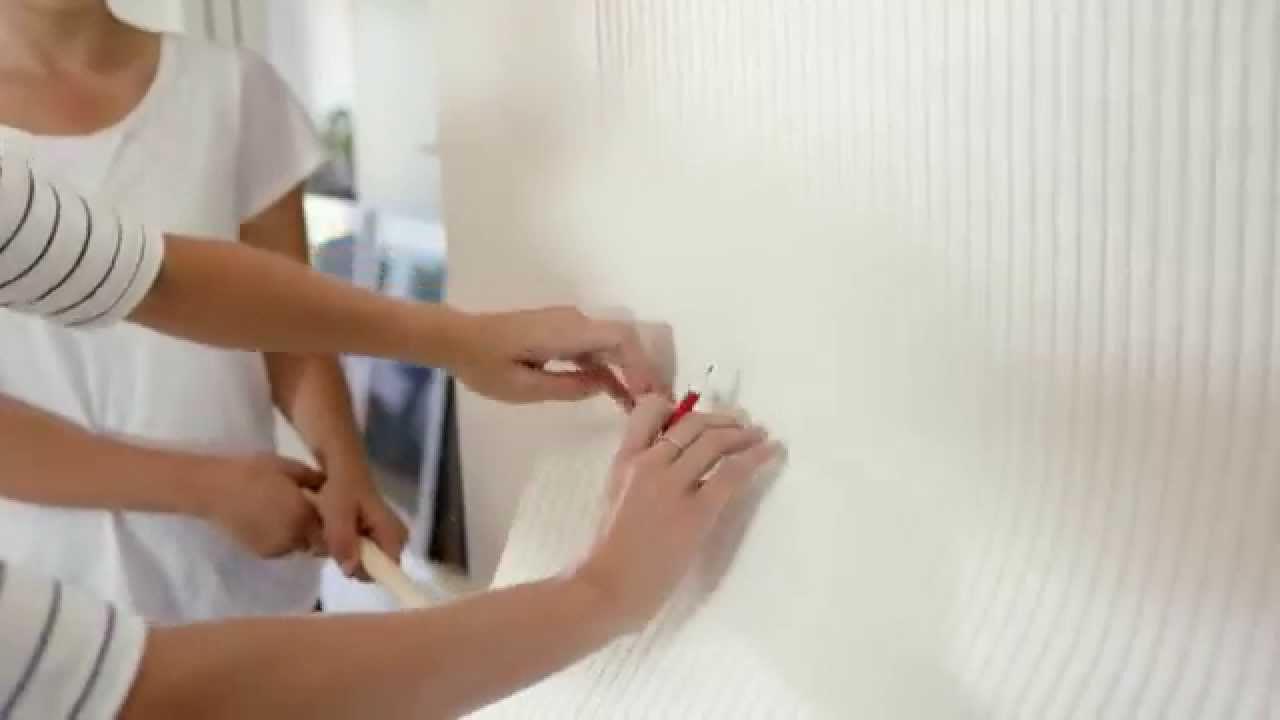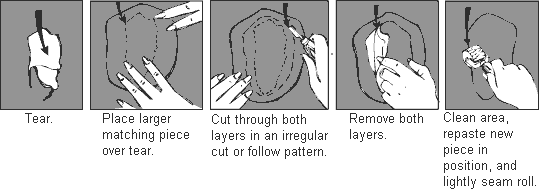Your shopping cart is empty!

On all wallpaper, except some textures and murals, there is what is called a pattern match or pattern repeat. This is the vertical distance between one point on a pattern design to the identical point vertically. This pattern repeat is an integral part of the design. A random match is one in which the pattern matches no matter how adjoining strips are positioned. Stripes are a good example. A straight-across match is one in which the design elements match on adjoining strips. A drop match is one in which there is a vertical drop between the matching design elements. With straight-across matches, every hung strip is the same as the ceiling line. With drop matches, the number of strips hung before a strip is repeated is dependent on the type of drop match. Patterns with a significant drop match (24 inches or greater) will require additional wallpaper to be ordered.

No, as long as you are willing to invest the time to browse through the wallpaper books to find the wallpaper that suits your taste. If you are unsure about what wallpapers will complement your home decor, most home improvement centers and wallpaper stores have associates who will be able to assist you. Home improvement and wallpaper stores generally sell for 10-50% (or more) off of full list price.
Yes. There are numerous resources available online and at home improvement stores to aid in self installation. First-time installers should avoid kitchens and bathrooms, as these are more complicated. Certain types of wallpaper should only be hung by professionals and you must match your particular skill level, wallpaper type and complexity of application to give you a fair indication whether it’s time to call for help.
No, as long as you are willing to invest the time to browse through the wallpaper books to find the wallpaper that suits your taste. If you are unsure about what wallpapers will complement your home decor, most home improvement centers and wallpaper stores have associates who will be able to assist you. Home improvement and wallpaper stores generally sell for 10-50% (or more) off of full list price.
Yes. There are numerous resources available online and at home improvement stores to aid in self installation. First-time installers should avoid kitchens and bathrooms, as these are more complicated. Certain types of wallpaper should only be hung by professionals and you must match your particular skill level, wallpaper type and complexity of application to give you a fair indication whether it’s time to call for help.
Yes, and if done properly, the repair is practically invisible. As illustrated below, place a larger piece of wallpaper over the tear so that it makes an exact match with the wallpaper on the wall. Use a razor knife (with new blade) to double-cut through both layers around the tear. Remove both layers, clean the exposed wall area and re-paste the new piece into the area. After 15 minutes lightly seam roll the fitted edge. Note that an irregular, wavy cut following the design in the wallpaper will make your cut less noticeable. If there is a pattern around the damaged area, attempt as much as possible to follow this pattern with your cuts, as this will camouflage the repair as well.

Absolutely. Start with good preparation by removing all nails or other protruding objects. For textured surfaces, "knock down" any high points. For paneling, now is the time to ensure that the paneling is secure by adding additional nails if needed. For slick surfaces/paneling, wash with TSP (TriSodium Phosphate) or equivalent grease cutting cleaner.
Now, you can hang bridging material. This is thick, blank wallpaper designed for irregular surfaces. Once hung, this will "bridge" the grooves in paneling or other unusual surface allowing for the ultimate application of wallpaper or paint.
Alternate/additional advice: The application of joint compound to the grooves of paneling is an additional precaution when using bridging material. Some wallpaper installers use the "joint compound, then primer" technique instead of bridging material.
For ceramic or other tile, sand the surface with 200-400 grit sandpaper followed by rinsing with TSP. Apply a prep coat and then hang your bridging material. Examples of prep coats include Roman’s R-35, Zinsser’s Z-54, California Paint’s Prep ‘n Size, Golden Harvest’s BITE, Muralo’s Adhesium, Duron’s Tack Prep or Benjamin Moore’s Wall-Grip.
There are many types of wallpaper. Wallpaper consists of a backing material and a surface layer. The backing material could one of the four major types and the surface layer could be paper, fabric, vinyl, natural textile, or one of many other types.
Yes. When you receive it, check the wallpaper you have purchased roll by roll to ensure you have the correct pattern, color and sufficient quantity of the same lot number. There are many flaws you can spot even with new wallpaper right from the store or shipping company. Some of them include damaged edges, un-even coloring from side to side or roll to roll, or other flaws.
How good are the walls? If the walls are perfect, a flat finish wallpaper will work or a silk/shimmer effect. If the walls are less than perfect, look for a paper with an embossed or expanded surface texture. For areas that have a lot of use (e.g. hallways), a very plain finish will show marks. A textured or patterned surface is a little more forgiving.
Do you want the same wallcovering throughout the whole house or personalize the rooms? Borders are one way to add personality while maintaining continuity.
How much light do you get in the room? Remember, light colors reflect light and dark colors absorb light. Don’t be frightened of stronger colors as they can be very expressive and add "depth" to a room. Colors affect your mood so think about the mood you want to create. For example, “Greens” are restful, “Reds” are stimulating, "Yellows" are happy and "Blues" are cooling. Think about your own color preferences or pallet - the colors you select for your clothes. Do you want your home to be tranquil and peaceful, or exciting and vibrant? Whatever the mood, it should be a reflection of your personality. Have fun with wallpaper!
If you really want to express yourself with wallpaper, here are a few ideas:
Wallpaper the Ceiling - Why not the same pattern as the walls or a coordinating paper. A little floral on the ceiling of a bedroom could look really super.
Borders - There are some wonderful borders available to coordinate your wallpaper. They can be used in many ways. Run a border at ceiling height. Create a split wall with a border at chair rail height; a darker paper below and light coordinate above. Create a panel in the center of a wall with a border edging mitered on the corners. Borders can be used around architectural features such as doors and windows. Use more than one border thickness - wide and narrow. Run a border at the chair rail height and one at the ceiling level.
Run a border at ceiling height Create a split wall with a border at chair rail height, a darker paper below, and light coordinate above. Create a panel in the center of a wall with a border edging mitered on the corners. Borders can be used around architectural features such as doors, and windows. Use more than one border, they are available wide, and narrow. Run a border at the chair rail height, and one at the ceiling level.